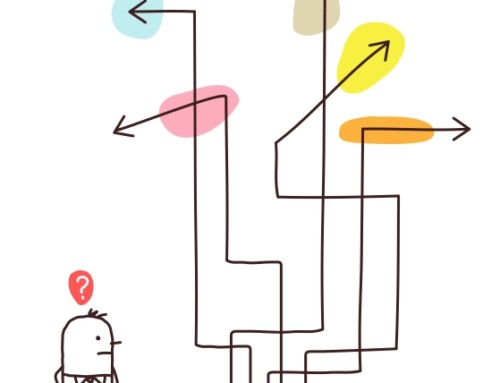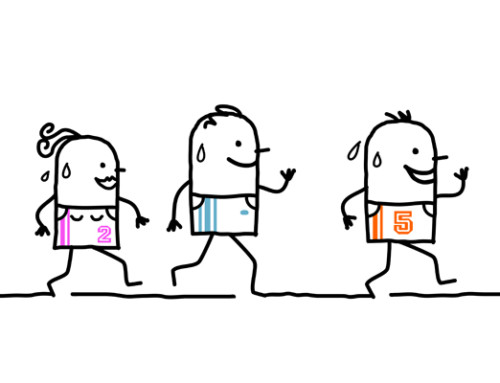In this article, I discuss ways to protect yourself from depression when you are at risk because of genetics and negative thinking patterns.
As is the case with many negative conditions, depression is not an equal opportunity issue. Through the luck of the draw, some people are more vulnerable to depression because they possess certain risk favors for the issue. In the following sections, I will discuss two such risk factors—genetics and negative thinking patterns. My focus will be on how to help protect yourself from depression if you have one or both of these risk factors.
Genetics as a risk factor
There is evidence of heritability in depression. That is, people who are genetically similar are more likely to experience depression than those who are genetically dissimilar. Research findings of this type often result in people erroneously assuming that if someone you are genetically similar to–such as a parent–has suffered from depression, it necessarily means that you will suffer from it. It actually means that you are more vulnerable to experiencing depression if someone you are genetically similar to has suffered from it.
Whether a genetic risk factor results in your actually suffering from depression depends on whether it is combined with an ‘environmental trigger’ which results in the depression manifesting itself. These environmental triggers typically involve significant stress in one or more key aspects of your life such as work or school, relationships and finances.
If you are able to manage your life in such a manner that these significant stressors do not occur or are short-lived, there is less likelihood that being at risk for depression because of genetics will manifest itself in your experiencing depression. If these stressors occur for an extended period of time without your being able to reduce or eliminate them, there is increased likelihood that the genetic vulnerability will result in your experiencing depression.
Cognitive risk factors
Cognitive risk factors for depression involve tendencies to interpret events in negatively distorted ways. The result is that when a stressful life event occurs, it is likely to trigger depression because of the tendency to interpret these events in a manner which has a negative effect on mood. For example, if a person’s thinking is such that they tend to jump to conclusions without sufficient evidence, then if someone close to them were upset they may assume without sufficient evidence that they were the reason the person was upset.
In other words, their tendency to think in negatively distorted ways would be a risk factor which combined with an environmental trigger—someone close to them being upset—would result in their experiencing depression. In this example, were the person not to have the risk factor of distorted thinking that same environmental event—the person being upset—would have been less likely to trigger an experience of depression.

Cognitive risk factors for depression can also involve negative ‘underlying assumptions’ which guide people’s thinking as they enter situations such as “If I approach someone, they won’t like me”. Often accompanying negative underlying assumptions are negative core beliefs. These are deeply held negative views of oneself, other people or the world such as “I am inadequate” “People are malicious” and “The world is scary”. These deeply held negative ways of thinking serve as additional cognitive risk factors for depression because they are often brought to the surface when stressful events occur with a resulting negative effect on one’s mood.
Unlike with genetics, when a person’s has negative thinking tendencies they can take steps to make this less of a risk factor for depression. The best way to do is by practicing skills from cognitive behavioural therapy (CBT) which train you to substitute accurate or balanced thinking for negatively distorted thinking in response to stressful events. The thought record is the most basic tool which fosters the development of this skill. It helps a person to identify distorted thinking in specific situations and substitute balanced thinking in its place.
CBT facilitates the elimination of negative underlying assumptions with behavioural experiments in which evidence not supporting these assumptions is amassed. Negative core beliefs can be changed by accumulating evidence which does not support them and which supports alternative positive core beliefs.
Summing up: How to shield yourself from depression in the face of risk factors
In summary, protecting yourself from depression in the face of risk factors involves the following strategies: (1) Take steps to address those risk factors which you can address to reduce or eliminate them—that is cognitive risk factors; (2) Manage stressors in your life to reduce their intensity and duration. This will make it less likely they will act as environmental triggers leading you to experience depression given the presence of one or both of genetic and cognitive risk factors.
A psychologist who specializes in CBT can guide you in the implementation of the strategies discussed in this article. As a Calgary psychologist and a Cochrane psychologist, I help my clients in depression counselling learn and apply these strategies.
May you protect yourself from depression by managing your risk factors,
Dr. Pat






Leave A Comment